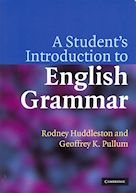We all know that the Eskimo language has loads of words for snow, don't we? And that number grows with the telling: 10, 50, 100s, whatever. Pullum's acerbic little essay (essentially a review of Laura Martin's in-depth study of the claim) points out that (1) there is absolutely no evidence for the claim, and (2) even if it were true, it would be of no more interest than the fact that interior designers have names for shades of mauve. The main thrust of his essay, however, is that, even though Martin has comprehensively debunked this 'fact', it has been impossible to eradicate it from popular culture, or even from academic linguistic culture, because nobody ever checks their sources.
The theme underlying this whole collection of essays (reprinted from his TOPIC...COMMENT column in Natural Language and Linguistic Theory) is that of a shoddy level of scholarship in the discipline of linguistics: researchers who don't check their sources, and who fail to reference the literature, reviewers who don't know the literature, journals that don't copy edit where they should, and do copy edit where they shouldn't. The essays are acidly humorous, but since they are written for academic linguists, I am sure I missed many in-jokes. Still, they give a fascinating insight into another discipline, some wise thoughts on academic integrity that are generally applicable, and some wonderfully funny moments.
And found on the Web:
- Stuart Derby gives 10 basic words for snow and ice, and 49 derived forms, from West Greenlandic
- Anthony Woodbury gives 15 distinct snow-related lexemes from the Central Alaskan Yupik-speaking region


